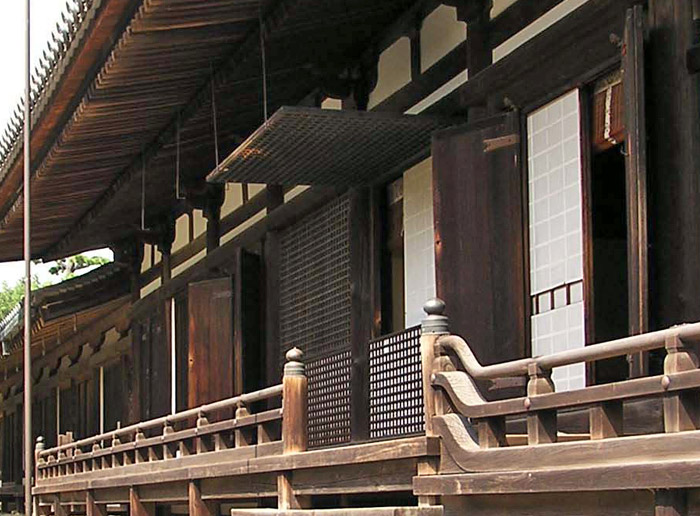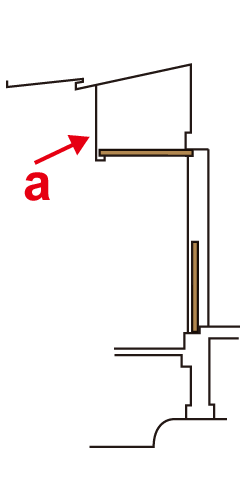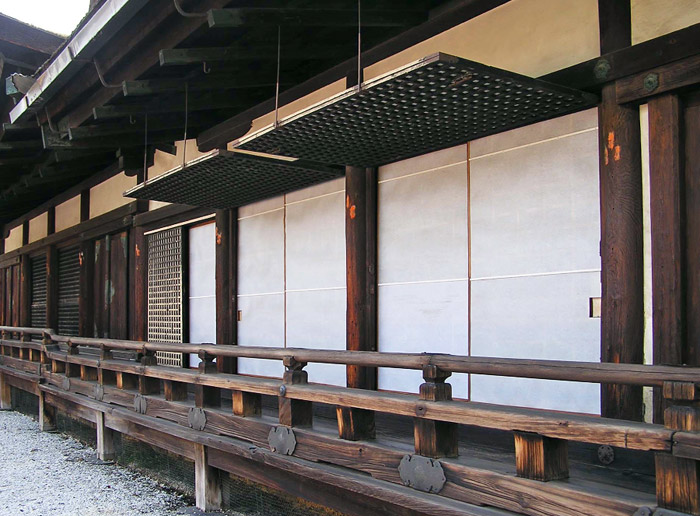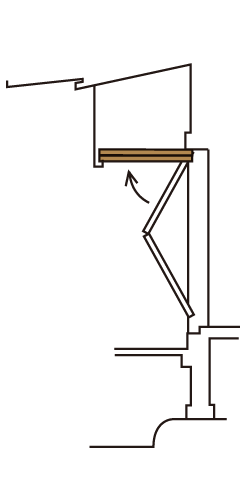| Also called hajitomi ¼Á or *shitomi
Á. Wooden shutters with crisscross lattice that is often attached on both the
exterior and interior sides of the window. Each shutter section is divided horizontally
so that the upper half is suspended by metal hinges attached to an overhead, non-pretrating
lintel uchimori nageshi à@·. Generally, it opens out and swings up so
that it can be held in place by metal fixtures called shitomizuri ÁÝ; also
written ÁÞ. These metal fixtures are long rods bent into hooks on their outer
ends. They are affixed to raised rafters *jidaruki
nØ that extend out into the eave overhang *noki-no-de
¬Ìo. The lower section has crisscross lattice on its front side and a timber
panel backing. It fits between two pillars *hashira
, and usually rests on a kick board *kehanashi Rú. It is secured to the
pillars by knuckle hinges called tsubogane Ùà. If necessary, this section
can be removed. Shitomido first appeared in the shinden style buildings
*shinden-zukuri Qa¢,
the style of dwellings developed for the aristocracy during the Heian period.
Examples also are found in the shoin style buildings *shoin-zukuri
@¢, and in various temple and shrine buildings. Originally these shutters were
made in a single piece to fit the size of the bay *ken
Ô, into which they were placed. They were also suspended by metal fixtures from
the overhead, non-penetrating lintel. Being both heavy and awkward to remove,
they were divided to make them more manageable. |






